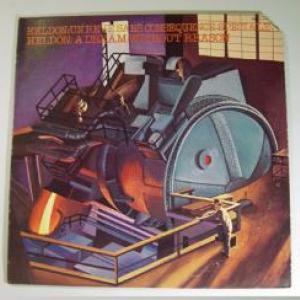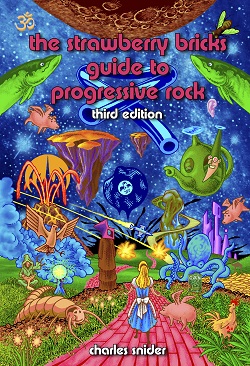A Dream Without Reason
by Heldon


Artist:
Heldon
Label:
Inner City Records
Catalog#:
IC 1021
Format:
Vinyl
Country:
United States
Released:
1976
| Tracklist | |||
| A1 | Marie Virginie C | 11:37 | |
| A2 | Elephanta | 8:27 | |
| B1 | MVC II | 6:10 | |
| B2 | Toward The Red Line | 15:15 | |
Credits
Bass - Jannick Top
Drums, Percussion - François Auger
Guitar, Synthesizer, Mellotron - Richard Pinhas
Keyboards - Patrick Gauthier
Notes
Title: "Un Rêve Sans Conséquence Spéciale" in France.
Released in 1976.
Edited on CD in 1995 on Cuneiform.
Strawberry Bricks Entry:
Heldon's fourth album (also carrying the subtitle of Richard Pinhas's then-girlfriend, Agneta Nilsson) was released in early 1976, and offered a more polished production than previous efforts. The big change though was the middle section of the album's side-long piece, "Perspective IV." Aided by Coco Roussel on drums, Alain Bellaïche on bass guitar and Patrick Gauthier on Mini-Moog synthesizer, Heldon delivers very aggressive rock ‘n' roll. The approach was continued on the next album, Un Rêve Sans Conséquence Spéciale (US title: A Dream Without Reason), where Heldon was now the trio of Pinhas, Gauthier and drummer François Auger-(more or less) a band. While there is a certain resemblance to the power-trio era King Crimson, Heldon is far darker, far more experimental and indeed, violent: The album is a savage mix of lead guitar, lead synthesizer, manic drumming and incessant sequencer. "Marie Virginie C." finds a potent combination of sequencer and drums, while "Elephanta" is pure percussive mayhem. "MVC II" again is altogether different: Lumbering over a slower sequence, it's a lot closer to what would be known as "industrial" music later in the decade. "Toward the Red Line" features bassist Jannick Top, but his contribution is difficult to discern: The track harks back to the extreme electronic improvisation of Heldon's earlier works. The album saw distribution on the French Cobra label, and even garnered a US release on the Aural Explorer/Inner City label. Two final Heldon albums followed, with both offering further refinement (and progressively slicker production) to the approach first presented here. Interface saw release on Cobra in 1977, while the 1978 release Stand By saw a switch to the Egg label and Didier Batard on bass. In late 1976, beginning with the album Rhizosphere, Pinhas launched a parallel solo career (mostly synthesizer works), and continued recording well into the 1980s.

